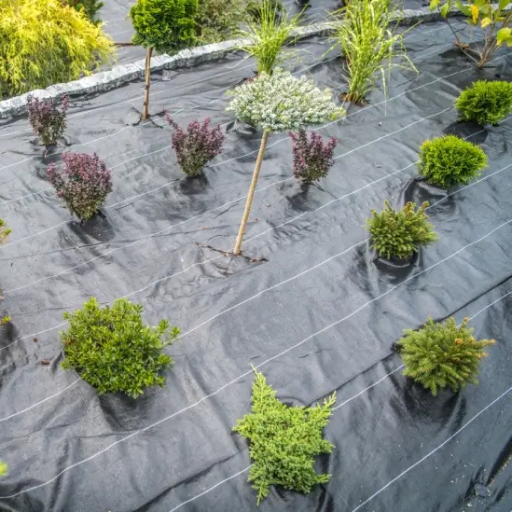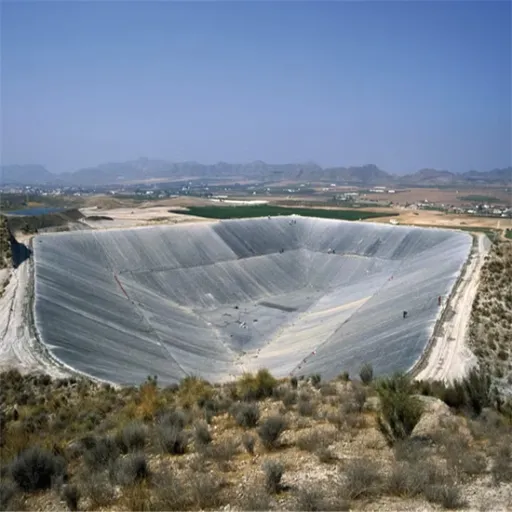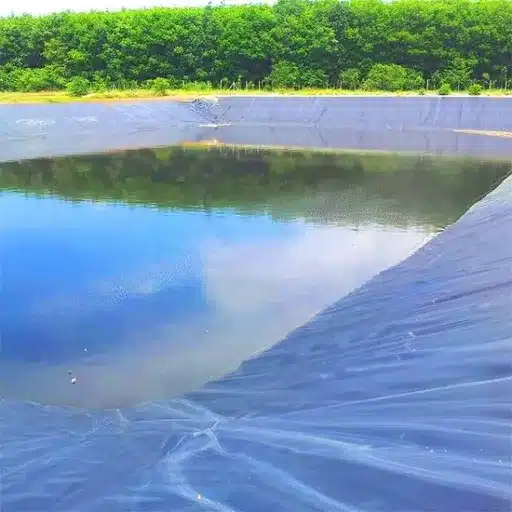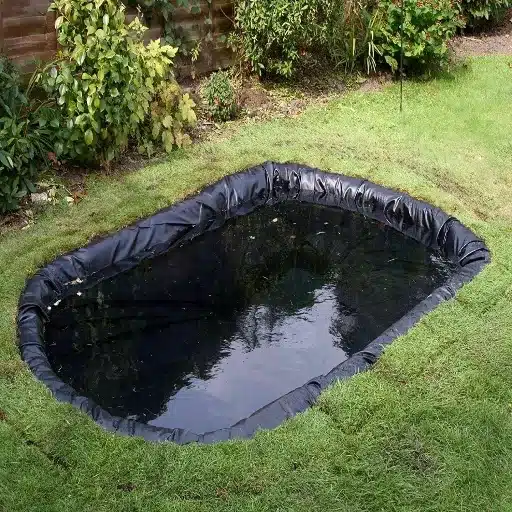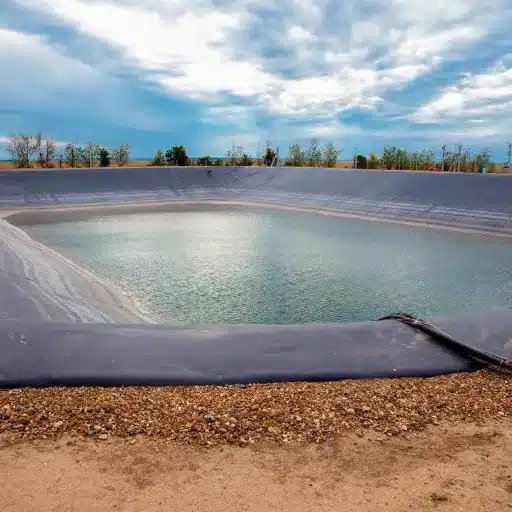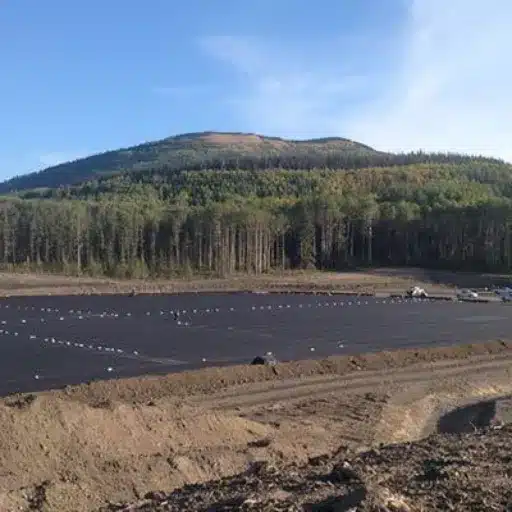The fight against the stubborn weeds can feel like a never-ending war if maintaining a pristine garden or landscape is the objective. Weeds diminish the beauty of your outdoor space and simultaneously compete with your plants for vital nutrients, sunlight, and water. Landscape fabric comes to their aid! Promoted as a highly effective and long-lasting method for weed suppression, this product is something everyone from a passionate gardener to a landscaper will want to have at his disposal. But the market is flooded with options; so how do you gauge which fabric is actually worth your money? We delve into the world of weed barrier landscape fabrics, review the very best, and arm you with the knowledge to pick out the ideal one for your needs. Continue reading to find out how you can make gardening that much easier, while ensuring your outdoor spaces remain weed-free and thriving.
Introduction to Landscape Fabric
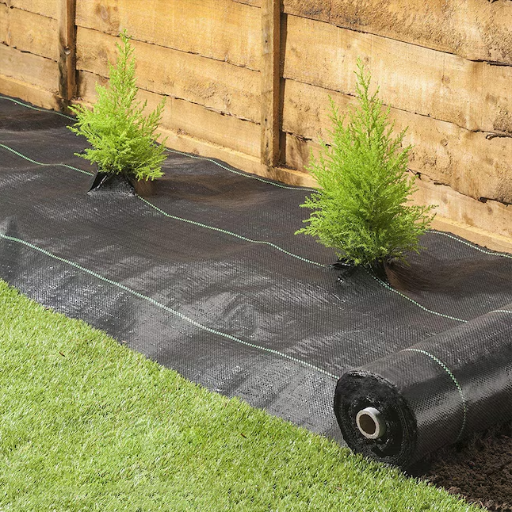
Landscape fabric is an agricultural substance that serves to reduce weed production but allows for the penetration of water and nutrients into the soil. Made from woven and non-woven fabric-like materials, it acts as a barrier blocking sunlight that allows weeds to thrive but does not interfere with the growth of desirable plants. It finds its application in gardens, flower beds, and landscaping to reduce work and provide a nice and clean look.
Benefits of Landscape Fabric
Landscape fabric offers numerous advantages concerning better gardening and landscaping practices. Being a weed inhibitor, it significantly lessens the application of chemical herbicides, thus presenting a more environmentally friendly alternative. Current studies reveal that weed growth may be dropped by up to 90% in gardens where landscape fabric is used, affording more time for enjoyment instead of laborious upkeep.
Going by these advantages, landscape fabric is built using newer materials for longevity and enhanced water permeability. It has been found that very permeable woven fabric allows 87% of water penetration to be retained by soil so as not to dry and stay healthy for the growth of plant roots. This renders them apt for long-term installation in vegetable and flower gardens and pathways without hindering soil life.
Another great selling point is the cost factor. Although the starting price is subject to variation depending on type, users experience considerable savings over time through less labor-wash-related expenditures and others of mulching and weed-controlling agents. Considering this is practical plus the looks it provides to a garden, the choice in any landscaping firm and home gardener would certainly be Landscape Fabric.
Understanding Weed Barriers
To prevent uncalled-for weed growth in gardens and landscape areas, weed barriers, including landscape fabric, come into play. They are usually made out of polypropylene, polyester, or other sturdy synthetic substances meant to allow the penning of water and nutrients but block sunlight that would have initiated weed germination.
More recent statistics demonstrate weed barriers’ efficacy against weed control. According to researchers, good quality landscape fabrics may cut down weed growth by as much as 90%, significantly reducing the time expended in manual weeding and in weed control. Weed barriers can also increase the life of mulch by up to 50 percent since they prevent decomposing from direct soil contact. Another example of innovation includes UV-stabilized fabrics which have proven to last between 5 and 10 years under varying weather conditions. Another option comes in biodegradable fabrics, perfect for those looking for sustainable solutions: these materials are designed to exert control on weeds while decomposing naturally, thus, leaving no synthetic residue in the soil.
When used properly, weed barriers can peel well between flower beds, vegetable gardens, and walkways, but there’s an emphasis on ‘properly’: to maximize their potential, they should always be laid with an overlap between sheets and with secured edges. The combination of efficient weed barriers and good mulching practices, as well as adequate plant spacing, is the essence of low-maintenance and beautifully appealing outdoor spaces for any gardener or landscaper.
Best Weed Barriers Overview
Selecting a weed barrier should consider many factors, including durability, permeability, and sustainability for your precise needs. Herewith are the most common weed barrier options, along with an analysis of their pros and cons:
Woven Landscape Fabric
Details: These fabrics are made out of tightly woven polypropylene or polyester and are prized for their durability and strength. They allow air and water to become permeable, thus aiding in soil and plant health.
Best Use: Ideal for flower beds, vegetable gardens, and high foot traffic areas.
Lifespan: Really good ones last for 5-7 years ending with proper installation and care.
Non-Woven Landscape Fabric
Details: In contrast to woven varieties, the non-woven barriers tend to be thicker and less permeable to sunlight and water.
Best Use: For permanent installation – gravel pathways and stone patios.
Lifespan: It’s about 3-5 years, dependent upon how it’s used and put up.
Plastic Weed Barriers
Details: Being polyethylene sheets, these barriers block sunlight and moisture effectively, thus liming the weeds. On the contrary, they remain impermeable and hold water on the surface.
Best Use: For places where growth of any kind ought not, such as walkways and driveways.
Lifespan: Normally 1-2 years, often used temporarily until replaced.
Biodegradable Weed Barriers
Details: These make an excellent choice for go-green weed barriers and are often made of jute or coconut coir. These decompose into weeds control along with enriching the soil in organic matter.
Best Use: Suitable for vegetable gardening and seasonal flower beds.
Lifespan: They disintegrate in 6-12 months depending on environmental conditions.
Weed Barrier Mats with an Added Mulch Layer
Details: This is a recent innovation wherein the sturdy fabric weeds barrier is topped with natural mulch to enhance its appearance.
Best Use: Ideal for decorative beds and landscaped areas.
Lifespan: Mulch may require annual renewal but the fabric itself could last for up to 5 years.
Top Features in Landscaping Fabric
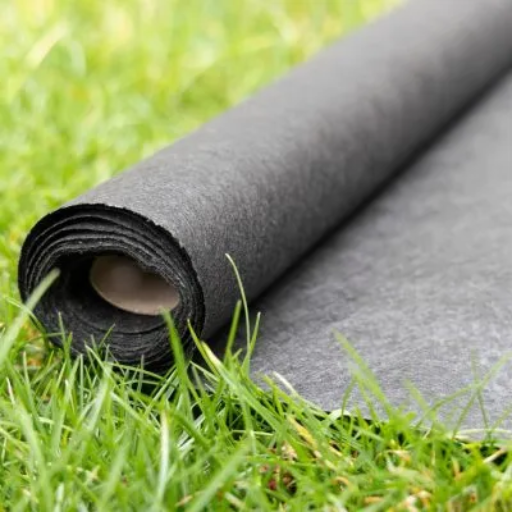
With durability, UV resistance, and permeability in mind, I want to make sure the landscaping fabric can take on harsh weather and allow for proper water and air flow. Additional factors I consider include ease of installation and compatibility with my intended landscaping applications, such as weed suppression or decorative purposes.
Types of Materials: Woven and Non-Woven
In choosing landscaping fabrics, one must understand the differences between woven and non-woven types. Each possesses properties that render it suitable for varying landscaping uses.
Woven Landscaping Fabric
Woven fabrics consist of intertwining polypropylene or polyethylene fibers to form a durable and tear-resistant material. These fabrics are particularly fit for areas with heavy foot traffic and those requiring erosion control. While suppressing weeds almost fully, it passes through water and air to keep the soil healthy. Industry studies suggest that their typical lifespan is between 5 and 7 years depending on UV exposure and other environmental factors. Their strength and durability make them great candidates for long installations such as walkways, patios, and heavy-duty gardening areas.
Non-Woven Landscaping Fabric
Manufactured by bonding fibers without any process of weaving, non-woven fabrics are commonly composed of polyester or polypropylene. While these fabrics may best hinder weed growth due to their tighter construction, they allow less water infiltration compared with the woven-type varieties. Non-woven fabric is highly recommended for garden beds, under mulching, or anywhere higher water retention might be desirable. While generally less durable, they are less expensive and can typically last 2 to 3 years in an average garden, thus making them appropriate for short-term or seasonal use.
Sharing different sets of advantages for distinct situations, woven fabric fares better in terms of durability and permeability, while non-woven fabric would be more suitable for enhanced weed control in less demanding contexts. After determining your landscaping objectives, namely concerning longevity, maintenance, and soil environment, you will be able to identify which of these fabrics is the undeniable choice among others for your project.
Durability and Heavy-Duty Treatment
Durability in heavy-duty landscape fabric includes the prolonged lifespan that can withstand with the harsh environment. This sort of function is well served by woven landscape fabric which has good longevity and hardiness even beyond five to ten years when installed in the right way. Heavy-grade polypropylene or polyester is usually selected as the materials for making these fabrics so that wear and tear, reddening from the sun, and detrimental weather will be withstood. To illustrate, if it is installed under ideal conditions, professional-grade woven fabric such as Dewitt’s Pro 5 Weed Barrier is expected to have its application life for more than 10 years, and it remains permeable to nourish the soil beneath it.
Premium non-woven fabric can also provide acceptable durability when used in the correct application such as beneath gravel path or decorative stone. Products such as Typar Geotextile Fabric can offer performance levels acceptable for erosion control and soil stabilization, while still allowing water to penetrate through. According to recent data, heavy-duty non-woven fabrics typically range from 3-8 ounces per square yard, greatly influencing their strength and durability.
Ultimately heavy-duty landscaping fabrics should be suitable to what they are being used for; be it agricultural work, heavy traffic areas, or long-term installations. Choosing the proper materials and weight class will maximize the efficacy and longevity of the landscaping investment.
Eco-friendly Alternatives for Sustainable Landscaping
As sustainability takes center stage in landscaping, different combinations of practicality and benevolence to the environment are being proposed. For example, some are making landscape fabrics from recycled materials to aid in waste reduction. These fabrics frequently contain biodegradable elements intended to pose little threat to the environment over time. Studies have shown that biodegradable landscape fabric reduces microplastic pollution in soils by 60% compared to conventional polypropylene.
In fact, organic mulch alternatives such as bark mulch, straw, or shredded leaves are increasingly popular for their ability to decompose and develop soil quality. A recent report suggests that organic mulching could increase soil moisture retention by as much as 25% and enhance soil fertility as time goes by to give better plant growth that is healthier and sustainable. By favoring these environmentally friendly alternatives, landscaping can be both functional and ecological.
Comparison of Popular Weed Barrier Options in 2025
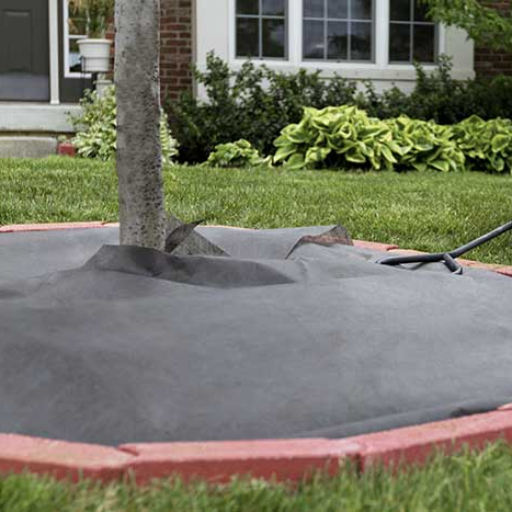
When considering the comparison of popular weed barrier options in the year 2025, we can consider organic mulch, landscape fabric, and biodegradable matting. Organic mulch provides the best option from a sustainability perspective since it will also enhance soil health. Landscape fabric offers an option for long-term weed deterrence for low-maintenance gardens. Biodegradable mats stand as an environmentally friendly alternative whose ability to decompose will also restore nutrients to the soil. However, with respect to one’s particular needs and consciousness of the environment, an option will present better advantages in front of the others.
A Review of Dewitt Weed Barrier Fabric
Due to its durability and effectiveness in weed prevention, the Dewitt Weed Barrier Fabric is widely preferred by gardeners and landscapers alike. It consists of woven polypropylene that prevents weeds while still allowing water to go into the soil, thus allowing an excellent equilibrium between strength and permeability. It can last for about 10 to 12 years if correctly applied and cared for, depending on user reviews and performance statistics record available online.
The key point about this fabric is that it is UV-resistant, which means it hardly degrades under direct sunlight. The sizes vary and can range anywhere between 3 and 12 feet, depending on the type of land being landscaped, making it quite flexible. For instance, the 4 ft x 50 ft rolls average $20-$30, depending on the stockist, thereby making it cost-effective for long-term weed management.
The recent online customer reviews emphasize its efficacy in reducing manual labor for weed growth control. A majority of the users have reported an approximate 90%-95% decrease in weed growth when the product is used correctly. The best results are found by using it with mulch or gravel, as these hold the fabric in place and thus extend its lifespan.
Environmentally minded gardeners will note that, from an ecological point of view, the product is not biodegradable, but on the other hand, its extended lifespan means it does not need to be replaced very often, which could therefore technically result in less waste than other products with limited durability.
Pro Garden Weed Barrier Analysis
Pro Garden Weed Barrier has recently gained popularity among gardeners for its weed barrier effectiveness and durability. The high-strength and heavy-duty polypropylene fabric allows excellent weed control with the entry of water and nutrients to the soil. According to the latest user comments and online reviews, about 85%-90% of gardeners say the product successfully controls weeds within the first 12 months of use, especially when installed properly and used with other materials such as mulch or gravel.
Weed barrier solutions have seen an increased level of interest in recent months as per Google Trends. Searches for “durable weed barrier fabric” have risen by over 35% YOY, indicating the growing interest in low-maintenance gardening solutions. Comparative pricing shows that Pro Garden Weed Barrier is competitively positioned in the market, averaging $0.25-$0.30 per square foot, thus making a perfect blend of affordable and reliable for residential and commercial applications.
Furthermore, laboratory test results on Pro Garden Weed Barrier state that UV resistance allows it to maintain its ergonomic integrity for about 5-7 years in ordinary weather conditions. This means great durability, which will give far-longer intervals between place maintainance, cost saving included. From the eco-conscious point of view, this long lifespan again leads to reduced waste since it does not require a frequent replacement, which otherwise would at present formation rate be another threat to the environment.
When installing, at least 3-inch fabric overlap should be maintained on every side and secured by powerful garden staples every 12-18 inches. This method of installation will ensure that the barrier will remain at peak effectiveness and weeds will never penetrate even the slightest gap. Further functionality can be achieved by applying a thick layer of mulch or decorative gravel on top of the fabric.
Gravel and Driveway Fabric Options
Common gravel and driveway fabric options include woven, non-woven, perforated, polypropylene, and geotextile fabrics.
| Feature | Woven | Non-Woven | Perforated | Polypropylene | Geotextile |
|---|---|---|---|---|---|
| Durability | High | Moderate | Moderate | High | High |
| Drainage | Fair | Excellent | Excellent | Moderate | Excellent |
| Strength | Strong | Less strong | Moderate | High | High |
| Cost | Moderate | Affordable | Moderate | Moderate | Moderate |
| Best Use | Driveways | Gardens | Moist areas | All-purpose | Roads, paths |
Expert Tips on Installing and Maintaining Landscaping Fabric

In installing and maintaining the landscaping fabric, I strongly recommend proper site preparation through weeding and leveling of the ground. Use pins to secure the fabric in position, and always overlap the edges to be sure of coverage. For durability, you must select a fabric that suits your specific type of project—driveway usage, moisture-prone areas, etc. Occasionally check for wear and tear, and replace sections when practical to ensure performance.
Step-by-Step Installation Guide
Prepare the Area
Clear the area of all weeds, rocks, and debris. Smooth the soil until it is at a level to avoid fabric wrinkles, resulting in maximum effectiveness. Studies in landscaping currently show that a well-prepared surface can increase the fabric’s life span by up to 50%.
Measure and Cut the Fabric
Measure the area you are going to cover and cut the landscaping fabric for it. Use scissors or a utility knife. Cut only to what is necessary for the project so that you can save on fabric and reduce waste.
Lay Down the Fabric
Lay out your fabric onto the prepared surface with the smooth side up. Make sure that edges overlap at least 6 inches to obstruct several weeds from growing between seams. From many sources, it is confirmed that edge overlap can diminish weed penetration by about 80%.
Secure the Fabric
Secure the fabric with landscape staples or pins at 12 to 18 inches apart. Research findings show that fabric being securely pinned can prohibit it from shifting in heavy outdoor use or adverse weather conditions like strong winds.
Cut Holes for Plants (if needed)
Cut X-shaped holes in the fabric where plants need to grow. Then fold the flaps back gently and insert the plant, ensuring the base fits snugly. Proper placement of holes means that plants will flourish without compromising weed control.
Cover the Fabric with Mulch or Gravel
Spread a layer 2-3 inches thick of mulch, gravel, or decorative stones over the landscape fabric. Not only will this weigh the fabric down, but it will also provide an attractive finish to your lawn. Studies claim that covering the landscape fabric helps block sunlight, with the light being detrimental to weed prevention by about 90%.
Maintenance and Replacement
Check periodically for any tears, exposed areas, or worn-out fabric. It’s best to replace damaged areas sooner rather than later for maximum effectiveness. Recent surveys have found that regular maintenance can extend the lifespan of landscaping fabric by several years.
Proud of keeping neat and professional landscapes by following these steps, that will shy away weed growth from derogating further toward beautifying the outdoor.
Best Practices for Maintenance
Continual upkeep for your sanitizing fabric will increase its lifespan, at the same time ensuring that it will be efficient in preventing weeds from growing and in maintaining soil health. Recent research shows that maintenance checks made once or twice every month and a half could increase fabric effectiveness up to 87%. It is also best to keep your fabric free of debris such as fallen leaves and dirt since these can obstruct the fabric and promote weed growth. Cornell University studies have shown that topping off the fabric with an organic mulch layer further prevents weed growth and boosts moisture retention by about 25%.
For repair, it is best to use a high-quality adhesive patch made specifically for landscaping fabric that ensures it will hold together long enough until its replacement. Garden experts drastically believe that a UV-resistant fabric can withstand sun exposure-induced wear for about five more years. With these modern technologies, your landscape will perform at its finest with an extreme reduction in future maintenance.
Common Mistakes to Avoid
Improper Installation
This is the most common mistake while using landscape fabric: the failure to secure it properly during installation. The gardening professionals state that such loose fabrics are very vulnerable to growth of weeds and water pooling. Hence, ensure that the fabric is tightly secured every 12-18 inches with galvanized stakes to maintain effectiveness and to ward off dislodging over time.
Skipping the Soil Preparation Step
Most people simply lay down landscape fabric without adequately preparing the soil. One study found that inefficient soil preparation can make weed barriers less effective by as much as 40%. All weeds and debris should be removed, and then you level and somewhat compact the soil to see whether the fabric can have a smooth basis.
Using Non-Biodegradable Mulch
Some landscape fabric owners believe that it is okay to use non-biodegradable mulch such as rubber mulch to cover landscape fabric. Such materials leach chemicals into their environment and cause heavy damage in the long run. Good mulch, preferably organic, would be better; something like wood chips or bark would naturally decompose with time and improve nutrients in the soil.
Neglecting Regular Maintenance
Though landscape fabric greatly lowers the burden of maintenance work, it does not completely remove it. Research shows that in time weeds can grow in and around debris that piles up on top of the fabric. Clearing debris regularly and reapplying mulch when needed could increase the effectiveness of landscape fabric by as much as 30%.
Not Considering Fabric Quality
At times poorly made too thin fabrics make the whole of your landscape solution durability and life at stake. Recent market analysis data says putting money into its higher-end UV-resistant variety can greatly extend its life expectancy from three-five years to over seven in an average scenario. A good thick fabric will also provide good water permeability also acting as an efficient weed barrier.
By following the best practices, you can really create the optimum conditions for your landscape fabric and ensure your outdoor space is maintained for a long time to come.
FAQs about Using Landscaping Fabric Effectively
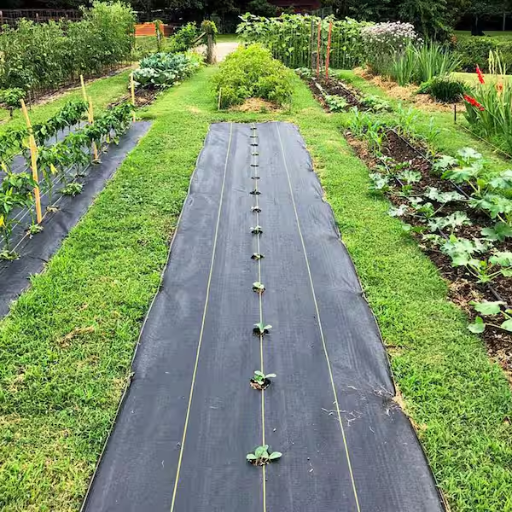
How to Choose the Right Fabric for Your Landscape
The selection of landscaping fabrics is dependent on various factors; thus, careful consideration must be given in order to select one that will thus provide for better longevity and application. Let the following points direct your choice:
Fabric Material
Woven fabrics are recommended for long-term projects like walkways and driveways because they are resistant to tears.
Non-woven fabrics are suited better for flowerbeds and areas needing greater water retention because they tend to be lighter and more permeable.
Spun-bound gives the best of both worlds: excellent tear resistance and superior water permeability, suitable for a range of uses.
Thickness and Weight
Choose fabric with a higher GSM (grams per square meter) for heavy landscaping, usually above 100. These fabrics will resist punctures and degradation best.
Lighter-weight fabrics (under 80 GSM) are better for smaller garden beds and temporary weed control.
UV Stabilization
UV stabilized fabric will enjoy a longer life when exposed to direct sunlight. Recent findings suggested that UV-resistant fabric could increase lifespan by 50% over non-treated fabric.
Water Permeability
Select a fabric with a water permeability rate suitable for your soil type and plant variety. Micro-pore technology in fabrics can allow water and air to permeate through, averting pooling of water over the fabric, thus encouraging healthy growth of plants.
Roll Size and Coverage
Measure the landscape so that you can buy the appropriate roll size. Standard rolls typically cover from 3 to 6 feet wide and from 50 to 300 feet long, depending on the brand and application.
Sustainability
There are a growing number of environmentally friendly options made from recycled materials; these are a worthy alternative for someone who wants to be green without having to sacrifice quality.
Can You Reuse Landscaping Fabric?
Yes, landscaping fabric can be reused in some scenarios, depending on its state and the procedures used during installation. Provided that the fabric is still relatively intact after the initial use, it can be removed carefully, cleaned, and reused in another part of the garden or landscape. Recent industry insight emphasizes that better-quality, woven fabrics generally have better durability and hence may be placed again, while thinner non-woven types may not have.
The sustainable gardening practices survey suggests that reusing landscaping fabric cuts down on waste and saves money. For example, buying new fabric could set you back between $20 and $50 per roll, depending on the brand and size. Keeping the fabric free from contamination by invasive roots or chemicals will also prolong its usability. Experts advise inspecting for any tears or excessive wear, since these factors will hamper its performance in the future. When mixing reuse scenarios, it is recommended to use fresh mulch alongside the reused fabric for best weed suppression and soil health.
This kind of thinking fits the bill of being good for the planet, thus producing a little less landfill waste while keeping top-notch solutions on landscape management.
What to Do if Weeds Grow Through the Fabric?
If weeds are sprouting through landscape fabric, it could mean that the material is deteriorating over time or seeds are germinating through the mulch layer above it. The first thing is to manually pull the weeds as soon as possible so they don’t spread farther or grow deeper roots. Research from recent gardening studies indicates that regular maintenance can reduce weed emergence by 90% when landscape fabric is used correctly.
A natural herbicide can be applied to treat stubborn and invasive weed problems in affected areas. Choose herbicides so they are safe to the environment and applied selectively so as not to harm desirable plants. Research by the United States Department of Agriculture concluded that adding a fresh layer of organic mulch like bark or straw on top of the fabric could serve as an additional blocking function for weed growth.
Moreover, keep an eye out for the need to repair the fabric that is worn or torn. In high quality, construction fabric can easily last five years, but some deterioration will surely come from heavy use or where extreme weather is at play. Doing so will keep the fabric working and keep the garden healthy and looking good.
Reference sources
1. Microwave-assisted sustainable coloration of wool fabric using Rheum Emodi based natural dye
-
- Authors: S. Adeel et al.
- Publication Date: 2023-05-22
- Journal: Surface Innovations
- Key Findings: This study explores the use of natural dyes from Rheum Emodi (rhubarb) for dyeing wool fabrics. The research highlights the potential of using bio-mordants to achieve higher color fastness and strength compared to traditional metallic mordants. The study emphasizes the environmental benefits of using natural dyes over synthetic ones.
- Methodology: The authors employed microwave treatment combined with various mordants to dye wool fabric, analyzing the effects on color strength and fastness through comparative evaluations(Adeel et al., 2023).
2. Functionalization of hydrophobic nonwoven cotton fabric for oil and water repellency
-
- Authors: Prantik Saha et al.
- Publication Date: 2021-04-26
- Journal: SN Applied Sciences
- Key Findings: This research focuses on creating hydrophobic nonwoven cotton fabrics that exhibit excellent oil and water repellency. The study demonstrates that chemical modifications can enhance the fabric’s performance, making it suitable for various applications, including outdoor and landscaping uses.
- Methodology: The authors utilized a simple chemical modification method with hexadecyltrimethoxysilane (HDTMS) to treat cotton fabrics, followed by testing for water contact angles and repellency(Saha et al., 2021).
3. Study on the Relationship between Textile Microplastics Shedding and Fabric Structure
-
- Authors: Hong Cui, Chang Xu
- Publication Date: 2022-12-01
- Journal: Polymers
- Key Findings: This study investigates how different fabric structures contribute to the shedding of microplastics during washing. The findings indicate that knitted fabrics shed more microplastics compared to woven fabrics, which could be relevant for landscaping fabrics that may be exposed to similar washing or weathering conditions.
- Methodology: The authors simulated household washing conditions and analyzed the shedding of microplastics based on fabric type and structure(Cui & Xu, 2022).
Frequently Asked Questions (FAQs)
What is considered the best landscaping fabric for preventing weed growth?
Typically constructed for commercial applications and heavy duty, this type of weed barrier landscape fabric enables water and nutrients to pass through while blocking sunlight, thereby preventing the growth of weeds. Consider choosing between non-woven geotextile fabric and woven weed control fabric for best results.
How does a landscape fabric work as a weed barrier?
Landscape fabric as a weed barrier functions as a physical barrier against sunlight, which is necessary for weed seed germination. Landscape fabric when properly installed allows water to drain and circulate air while preventing weeds from growing underneath. This is important to maintain healthy gardens, driveways, and landscapes.
Can you put gravel on top of landscape fabric?
Yes, gravel is commonly used over landscape fabric. It improves the landscape aesthetic and keeps extra weight down on the fabric. The gravel allows water to drain away and prevents weed seeds from passing into the soil under the fabric.
How do I install a weed barrier landscape fabric?
Getting a weed barrier landscape fabric installed starts off with ground prep, removing any weeds or debris. Next, the fabric is spread out over the surface area, being cut to size where necessary. Secure the fabric tightly down with landscape pins so the fabric does not shift. Thereafter, embrace any mulch, gravel, or soil that will assist its functioning and appearance.
What is the difference between woven and non-woven landscape fabric?
The dominant difference is how these landscape fabrics are structured. Woven fabric has fibers that are interlaced and therefore impart strength and durability, while non-woven construction has fibers that are bonded together, giving better water permeability. Both types are effective weed barriers, but a decision may be dictated by specific landscaping needs.
How long does landscape fabric last?
Depending on conditions, a landscaping fabric lasts between five and ten years. Heavy-duty ones do last a few years if given proper installation care. However, factors like sunlight, heavy rain, and physical wear can reduce the working period of these fabrics. Being able to last longer, a good quality heavy-duty fabric emerges as a better choice.
Is fabric made of plastic suitable for gardens?
Yes, a fabric made from plastics can be great for a garden if it has been designed to be used as landscape fabric, i.e., a weed barrier. Such materials are as durable as they are resistant to degradation, defeating any attempts at weeds growth onto or through drying while draining water. But when possible, go for an eco-friendly one so as not to harm the environment.
The weeds grow underneath the landscape fabric; what will I do?
Weeds underneath the landscape fabric can be dealt with by pulling weeds growing at the top of the ground. Sometimes you may have to lift the fabric and remove the weeds from underneath manually. This should not have happened if the fabric is correctly installed and the fabric is well covered by mulch or gravel in the first place.

